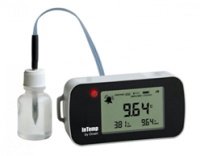How to Save Time & Money With Smart Tools That Simplify Humidity Monitoring
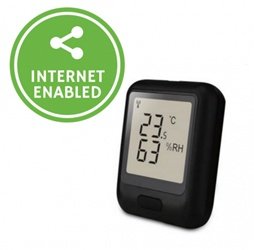
Here’s a quick quiz: Would you prefer to sit in front of a humidity meter and manually record readings – or have a smart, reliable, WIFI-enabled humidity logger do the recording for you?
Anticipating your answer, our scientists have compiled a list of smart, ambient humidity recording devices that make monitoring humidity levels and accessing past data a cinch.
What Is Humidity?
Humidity is the presence of water vapour in the air.
Essential Humidity Measurement Definitions
Relative Humidity: Relative humidity refers to a percentage of water vapour saturation. Hot air holds more water vapour than cold air. Therefore, relative humidity will increase as more water vapour fills a given atmospheric volume - until 100% humidity is reached, a moment where air holds the maximum amount of water vapour at a given temperature.
Dew Point: 100% humidity is referred to as the dew point. Moisture exceeding the dew point cannot remain suspended as water vapour. Instead, excess water will condense to form rain, fog, or dew. Dew point is a metric offered by specialised humidity meters.
How Is Humidity Measured?
A humidity meter or logger will take an air sample and then use either a capacitance sensor or a resistance sensor to calculate humidity.
1. A capacitive sensor has two metal plates separated by air. Humidity affects the capacitance of the plates - that is, the ability of the plates to store a static electric charge. By measuring the charge, the device can calculate humidity quickly and accurately.
2. A resistive sensor works as follows; electricity flows through a piece of ceramic material exposed to the air. Humidity changes will affect the amount of water vapour that condenses inside the ceramic material, altering its resistance. Therefore, measuring the current flowing through the ceramic determines the humidity measurement.
Why Measure Humidity?
As humidity affects humans, plants, and materials in contact with air, the list of applications requiring some form of humidity measurement is almost endless.
Consider these scenarios:
- Exercise and Outdoor Work: Overheating is a potential threat for anyone undertaking vigorous outdoor work or activity. Temperature and humidity influence our bodies' capability to cool by sweating. When humidity is high, we can’t evaporate as much sweat, so it’s more difficult to maintain a safe temperature.
- Greenhouses: The function of a greenhouse is to homogenise and optimise the growing environment for plants. If humidity is too high, condensation will occur, which is ideal for insects, algae and bad microbes. Conversely, when humidity is too low, greenhouse plants will experience stress because transpiration levels will accelerate beyond the plants’ tolerable levels.
- Industrial, Manufacturing and Storage: Humidity measurements are essential wherever there is a need to prevent the spoilage of goods from such humidity-related problems as condensation, mould, corrosion, or warping.
- Indoors: Excessive humidity in indoor environments can lead to mould, microbial growth, damaged property and poor health. If indoor humidity is too low indoors, occupants can experience discomforts such as a dry nose or throat.
What To Look For In A Smart Humidity Sensor
- Measurement Range: That is, the humidity range the meter can accurately determine.
- Measurement Accuracy: The closeness of a measurement to a specific value. Specifications will express the accuracy of a device as a range, i.e., plus or minus a set amount.
- Alarms: Alarms take your data logging to the next level – alarms notify you when set parameters have been breached. Check to see if your smart humidity sensor uses audible text, email or phone call notifications.
- Data Transfer: What is your logger's method of transferring data from the device to a platform or interface for observation? Smart devices can use Bluetooth, WIFI or both.
- Data Viewing Interface: How do you need to view your data - on a web platform, via a mobile application or both?
- Other Measurements: Does the meter perform any additional measurements such as temperature and dew point calculation?
Smart Humidity Meters Sensors
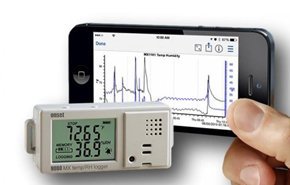
Mx Temperature/relative Humidity Data Logger
|
Discover what makes the MX1101 Bluetooth logger exceptional for logging humidity, temperature and dew point here. |

BUN Hygro Temperature and Humidity Record Alarm System
|
Wireless and worry-free - plus have user-customised alerts sent instantly to your smartphone!
|

WIFI Wireless Humidity & Temperature Data Logger
|
Need fuss-free logging directly to a computer? Find all EL-WIFI-TH features and specifications here. |
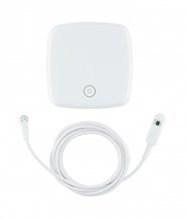
Temperature & Humidity Cloud-Connected Data Logger
|
Where flexibility and versatility are essential – choose the EL-MOTE-TH.
|
The Final Word
Wire-free and worry-free – now you can concentrate on more critical tasks! If you choose from the hand-picked, reliable humidity data logging sensors our scientists have selected, your data monitoring and assessment will become super-easy.
For more information on humidity data loggers, speak with an Instrument Choice Scientist: Call 1300 737 871 or email [email protected].
Also interesting
Our scientists regularly receive inquiries about long-probed soil moisture meters, helping customers find the perfect devices for their needs and explaining how to use them. In addition, because we answer similar questions, we often publish lists of the best contemporary soil moisture meters that feature long probes and share helpful tips.
View the latest, most popular soil moisture meter with long probes plus helpful measuring tips
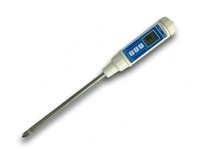
Glycol-encased temperature probes are designed for temperature monitoring – particularly for vaccine and pharmaceutical refrigeration and storage. This article details the key functions of glycol temperature probes then explores five excellent examples of thermometers and data loggers that employ this technology.
Get all the essential facts on glycol temperature probes
